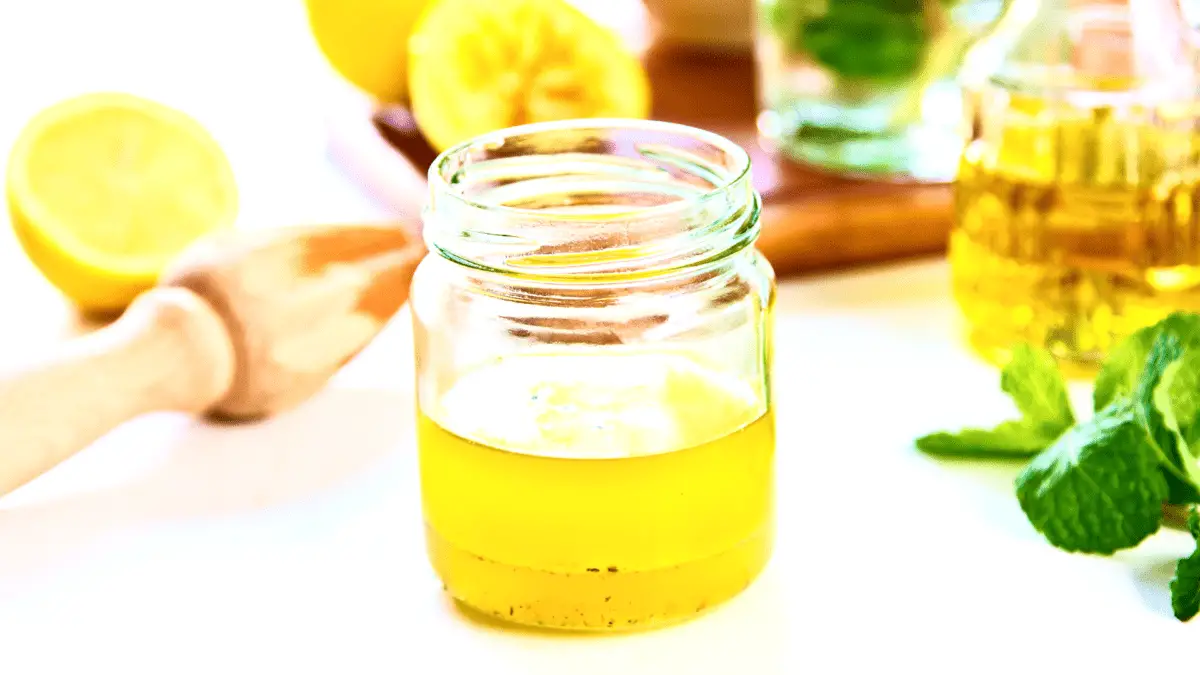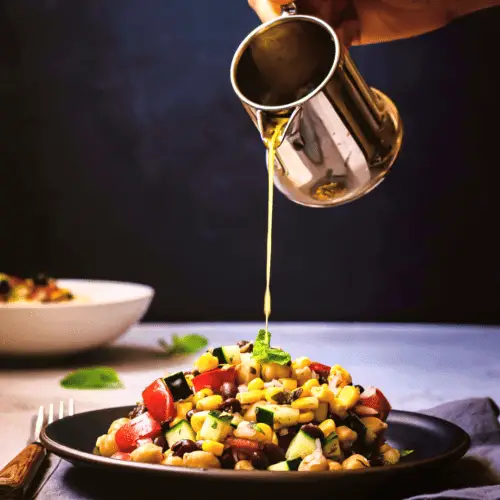Dashi Yuzu Vinaigrette Recipe: A Tangy & Umami Dressing
If you’re looking for a Japanese vinaigrette dressing with a little kick of spice, then look no further than this recipe.
Using the Japanese citrus fruit “Yuzu” and some dashi-kombu (seaweed broth), this dressing adds a tangy and umami flavour to your salad.


Check out our new cookbook
Bitemybun's family recipes with complete meal planner and recipe guide.
Try it out for free with Kindle Unlimited:
Read for freeIn this post we'll cover:
Make your own dashi yuzu vinaigrette at home
It might be hard to find fresh Yuzu fruit in stores, but bottled yuzu juice is the simple solution (Yamasan yuzu juice is best)!
This ingredient gives your vinaigrette a fresh and tangy taste compared to balsamic vinegar.
Try this flavorful dashi yuzu vinaigrette recipe with your favorite vegetable salad or a tray of roasted veggies!

Dashi Yuzu Vinaigrette
Ingredients
- 1/4 cup dashi dashi stock powder is easiest to use or make your own
- 2 tbsp soy sauce
- 2 tbsp yuzu juice fresh or bottled is fine (Yamasan yuzu juice is best)
- 2 tbsp extra virgin olive oil
- 2 tbsp water
- pinch of salt
- pinch of ground black pepper
Instructions
- Prepare the dashi according to package instructions.
- In a bowl or large cup, add 1/4 cup of liquid dashi stock.
- Mix in the soy sauce, yuzu juice, EVOO, water, salt, and black pepper.
- Whisk everything together until well combined.
Cooking tips
To make the perfect dashi yuzu vinaigrette, it is important to start with high-quality ingredients.
You can use fresh yuzu juice for the best flavor or bottled yuzu juice (this one is pure yuzu) if you can’t find fresh.
It might be hard to find yuzu fruit in your area. It looks almost like a lemon and is available in Asian grocery stores.
The flavor is very tart and fragrant, which makes it perfect for vinaigrette dressings.
I like to use regular soy sauce, but you can add dark soy sauce for a richer flavor.
You can use dashi stock powder (find out the powder-to-water ratio here) or make your own dashi from scratch using our easy dashi recipe.
Basically, you need a cup of bonito flakes, one large piece of kombu, and water.
You can just soak the ingredients for up to 5 hours or boil them for about 10 minutes and strain them!
Substitutes and variations
There’s not much you can substitute and vary for this yuzu dashi vinaigrette.
The yuzu fruit juice is really essential to get the right flavor, and the dashi stock adds that savory umami taste.
However, you can use a different type of stock if you don’t have dashi on hand.
If you are looking for something a little different, try using rice wine vinegar instead of yuzu juice.
It will give your vinaigrette a more sour taste, but it will still be delicious! You can also try lime juice or lemon juice.
Another option is to add fresh grated lemon or lime zest to the vinaigrette.
For extra flavor, you can also try adding some fresh herbs like cilantro or parsley. Just mix them in with the other ingredients and whisk until well combined.
This is a great way to add a bright finishing touch to your dashi yuzu vinaigrette.
How to serve and eat
This vinaigrette is perfect for adding a zesty and savory flavor to your salad.
It works great with Japanese cucumber salad (sunomono) because the dashi adds a nice umami flavor.
You can add it to any type of salad, but I love it with a simple green salad or a bowl of mixed greens.
You can also use it as a marinade for grilled seafood or chicken or add it to steamed vegetables for a quick and easy side dish.
Yuzu dashi dressing also goes great with roasted vegetables, like asparagus and broccoli.
The tangy yuzu juice really complements the rich, savory flavors of roasted vegetables.
How to store leftovers
You can store leftover dashi yuzu vinaigrette in an airtight container in the fridge for up to a week.
Just be sure to store it in a place where it won’t get jostled too much, or the ingredients could separate.
If you want to store it for longer, you can also freeze the vinaigrette in an ice cube tray. Just let it thaw completely before using, and you can stir the ingredients back together.
Similar dishes
This dashi yuzu vinaigrette is similar to other umami-flavored vinaigrettes, like ponzu or lemon dashi dressing.
Ponzu sauce is made with a combination of citrus juice, soy sauce, and vinegar. It is typically used as a marinade for meat or seafood, but it can work as a salad dressing, too, if needed.
However, the yuzu juice gives it a lighter and more refreshing flavor, making it perfect for spring and summer.
Other popular Japanese vinaigrette-style dressings include ginger dressing and miso vinaigrette. Try them all to see which one you like best!
Conclusion
If you’re sick of the same old balsamic vinaigrette on your salad, then try making yuzu dashi vinaigrette. It has a bright and tangy flavor that will add an exciting twist to any salad.
So why not give it a try today? Just mix your dashi stock with the yuzu juice and other ingredients, whisk well, and toss with your salad!
You’ll love the fresh, savory flavor of this delicious Japanese vinaigrette.
This dressing would taste amazing on this soba noodle salad dish that is healthy and easy to make
Check out our new cookbook
Bitemybun's family recipes with complete meal planner and recipe guide.
Try it out for free with Kindle Unlimited:
Read for freeJoost Nusselder, the founder of Bite My Bun is a content marketer, dad and loves trying out new food with Japanese food at the heart of his passion, and together with his team he's been creating in-depth blog articles since 2016 to help loyal readers with recipes and cooking tips.
